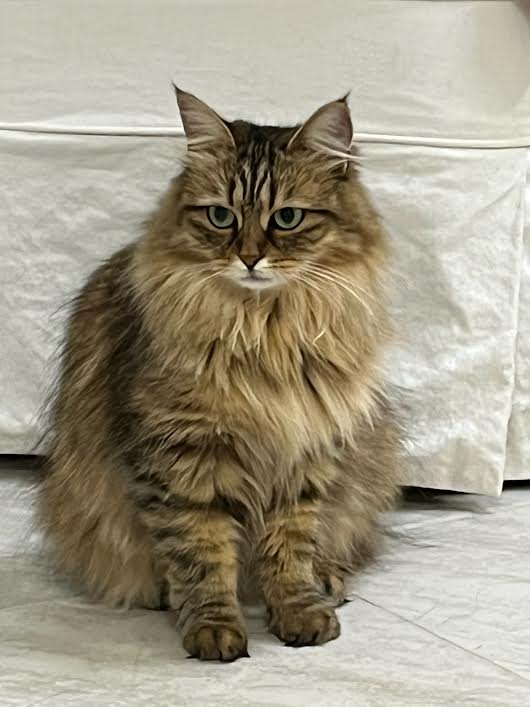|
Learn More About Siberians
One of our regular customers is a lovely little Siberian cat name Motley (seen above), and we are so enamored with her that we decided to learn more about her! This breed is relatively new to the US, and we weren’t able to have these kitties until they were discovered during the Cold War, and the cats were brought West. These cats are the national cat of Russia, which explains some of their names. Where Did Siberians Come From? Siberian Cats first arrived in the US in 1990 after being in (surprise!) Siberia since about 1000 AD. The proper name for these beauties is Siberian Forest Cat, which sounds even more exotic! Other names they have been known by are the Russian Longhair and the Moscow Semi-Longhair, but we think the first name is the best. Why they came from Siberia is a mystery, however with other Soviet citizens moving to the cold Siberian tundra, they most likely brought their cats or some ancestor of the current breed. Since we all know that Siberia is extremely cold, the cats adapted to the harsh climate and their coats became triple layered. Good thing, too; we up here in Syracuse know to layer for the snow and cold temperatures! How Do Siberians Stay Warm? To explain the coat properly, we start from the outside with the guard hair. Being outside can mean water, so their guard hair has adapted to repel it, which means Siberians aren’t afraid of water! The next layer of fur is a mid-coat called awn hair, and then we reach the final layer: their down hair. As with many cats with a down layer, it tends to mat, so frequent, daily brushing is needed, or you’ll be at the groomer having mats trimmed out constantly. Because of these three layers of fur, these cats love to be outdoors and can withstand very cold temperatures. So much fur also means Siberians shed, or molt, twice a year, which is triggered by the length of day, and not by the heat or humidity as we might expect. If you have a Siberian, be prepared to sweep and vacuum because they will lose a lot of fur during their shed. Hypoallergenic Cats An important tip about the Siberian cat is that they are considered hypoallergenic, which means they produce less of the protein Fel d 1. All cats produce this, and it’s what’s on the fur and dander that causes us humans to have an allergic response. While Siberian cats have less of this protein, don’t buy one thinking that your cat allergy will be avoided 100%! It may be lessened enough to consider them hypoallergenic, but that protein is not gone entirely. What Do SIberians Look Like? Siberians have very long beautiful fur, and one distinguishing coat characteristic is the fluffy and full neck collar. It is stunning, as are their big fluffy tails. Siberian cats are available in almost any color you can imagine, but some formal cat breeding associations do not consider Siamese colorings official. It takes around five years for the typical Siberian cat to achieve full growth. They’re a medium size cat that lives 10 to 18 years. What is the Siberian Personality? They typically have funny personalities, and are “dog cats” because they’re so active. Their strong legs also help them jump very high! Their meows are on the quieter side though, so you won’t jolt out of bed by the loud yowl other breeds have. If you love a good lap cat then you will be happy with your Siberian. They are kind and gentle cats who love to play, so kids do great with this breed. This breed of cats do best with a playmate, so having another Siberian or other cat, should be considered. Be sure to research a reputable breeder, and enjoy the fun with this social, floofy, snuggle-bug kitty!
0 Comments
Leave a Reply. |
AuthorWhen Cari has some free time from all the kitties, she likes to share her knowledge of all things cat in this bi-monthly blog. Enjoy the read! Archives
June 2024
Categories |


 RSS Feed
RSS Feed